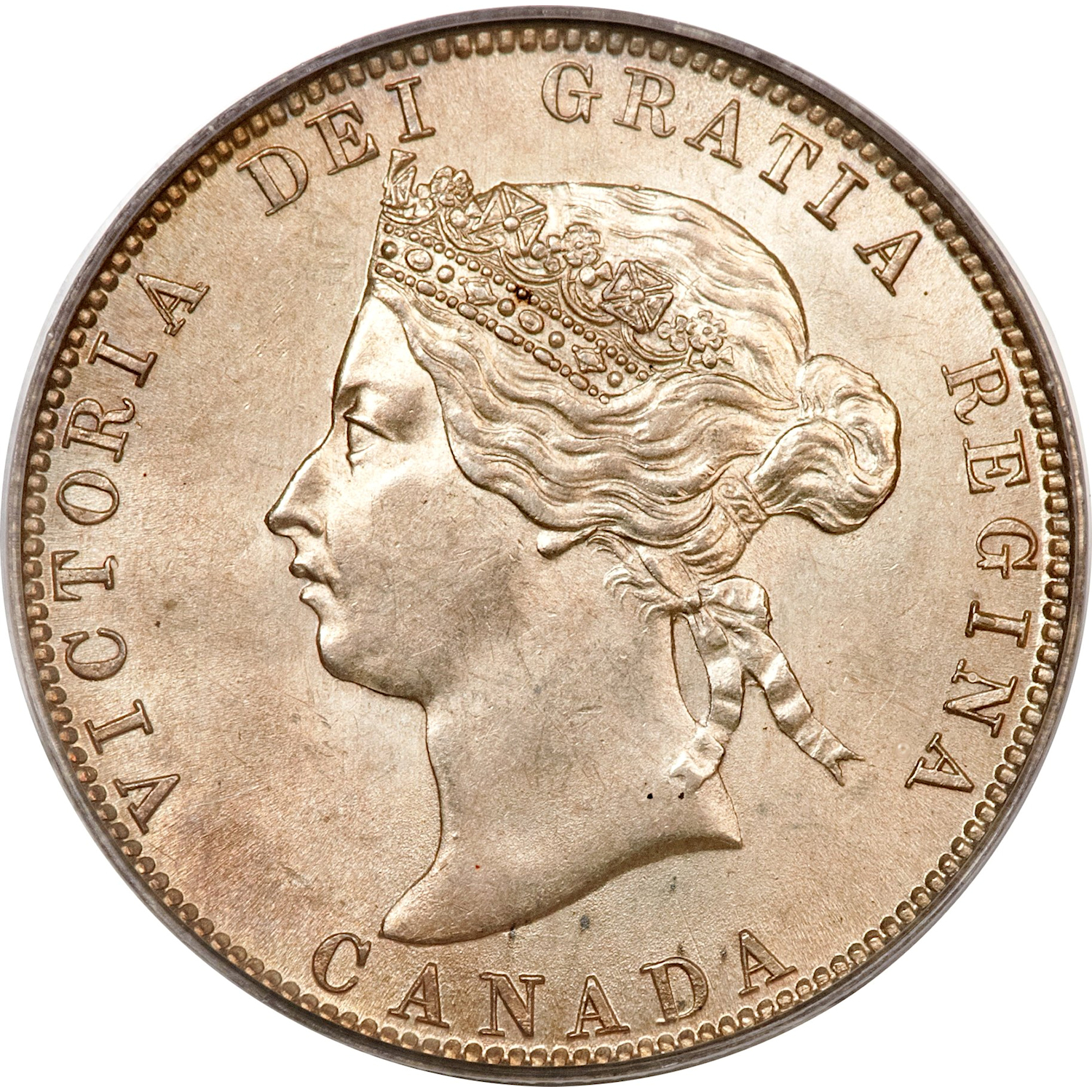Canadian Coin Grading
Victoria Coins (Diademed Efiigy)
This page describes the criteria used to assign grades to Canadian circulation coins which use the "Diademed" portrait of Queen Victoria. It also shows sample images of each grade.
All photos used here were taken of coins that have been professionally graded by companies like PCGS.
NOTE: Click on any photo to load a much larger version of both the obverse and reverse sides of the graded coin
P-1 (Poor 1)- All that is showing is a silhouette. You might not even see the entire outline of the portrait. - Most, if not all, of the rim has worn completely flat - Most of the lettering around the rim has partially or completely worn off. - You may not be able to determine the date, but should be able to determine the denomination by the outline of the portrait, the diameter, approximate weight and type of metal of the coin. At this grade the weight may not be a match to the specifications because so much of the metal has worn away. |
|
AG-3 (About Good 3)- All that is showing is a silhouette. - Only traces of detail on the headband at the very back of the neck (used to hold the diadem (crown) in place) is visible. - Most of the rim denticles are intact, although heavily worn. - Some of the lettering around the rim has partially or completely worn off. |
|
G-4 (Good 4)- All that is showing is a silhouette with a small percentage of the eye visible. - More detail of the headband at the very back of the neck (used to hold the diadem (crown) in place) is visible. - Some letters have begun to merge with the background. |
|
VG-8 (Very Good 8)- The hair covering the ear and diadem, and the back knot of hair is worn away. - The diadem itself shows considerable wear with vague outlines of the top jewels. - The eyebroiw and facial features are worn down. |
|
F-15 (Fine 15)- The hair covering the ear and diadem are worn. - The diadem is clear but the top jewels are worn. - The lower twist of the back knot is worn, with strands beginning to merge. - The overlapping neck ribbon is worn through. - The eyebrow and cheekbone are worn. |
|
VF-20 (Very Fine 20)- The sharpness of the design is lost. - The hair covering the diadem, the back knot, top jewels and the ribbon ends overlapping the neck are clear but have lost detail. - Original mint lustre has disappeared - Eyebrow and facial features show signs of wear. |
|
EF-40 or XF-40 (Extra Fine 40)- Traces of wear have now moved down to the eyebrow, the back knot, the top jewels and the ribbon ends. - 25% of the mint lustre remains around the letters of the legend. |
|
AU-50 (About Uncirculated 50)- Some traces of wear appear on all high points. - 50% of the lustre is present, and the halo effect around the portrait is clearly evident. - Mint lustre has been disturbed in the fields around the design. |
|
MS-60 (Mint State 60)- No traces of wear anywhere. - Contact or handling marks (bag marks) may be present and heavy on all parts of the design. - Lustre may be disturbed, but is present to a high degree. - Hairline scratches are present, and general eye appeal is poor. |
|
MS-63 (Mint State 63)- No trace of wear anywhere. - May have minor contact marks and blemishes. - Typical strike strength and original mint lustre. |
|
MS-66 (Mint State 66)- No trace of wear anywhere. A nearly perfect coin. - May have a few minor hairlines or handling contact marks in secondary areas ONLY. - Full original mint lustre must be present. |











